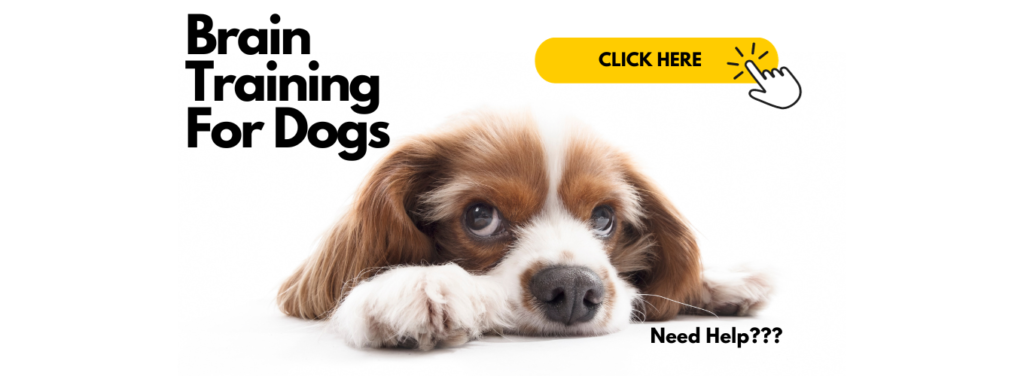
Cracking the Canine Code: Understanding and Improving Your Dog’s Response to Commands
Training your dog to pay attention and respond to your commands is crucial for their safety, well-being, and the harmony of your household. However, many dog owners often find themselves frustrated when their beloved pets seem uninterested or disobedient. In this article, we will explore the common reasons behind why your dog may not be paying attention to your commands and provide practical solutions to improve their focus and responsiveness. By understanding the importance of training and effective communication, you can strengthen the bond with your furry companion and create a happier and more cooperative living environment for both of you.
1. Introduction: Understanding the Importance of Dog Training and Communication
Let’s face it, we all want our furry friends to be well-behaved and obedient. But what do you do when your dog seems to completely ignore your commands? It can be frustrating and leave you scratching your head in confusion. The key to solving this mystery lies in understanding the importance of dog training and effective communication. Training your dog not only helps them become well-mannered companions but also strengthens the bond between you and your furry friend. So, let’s dig deeper and uncover the reasons behind your dog’s lack of attention.

2. Common Reasons for Lack of Attention: Identifying the Root Cause
There could be several factors contributing to your dog’s lack of attention. Let’s take a look at the most common ones:
2.1 Lack of Consistency in Training
Consistency is the golden rule when it comes to dog training. If you’re not consistent with your commands or expectations, your dog may become confused and unsure of what you want from them. Imagine if someone changed the rules of a game every time you played – you’d be pretty frustrated too!
2.2 Ineffective Use of Positive Reinforcement
Positive reinforcement is a powerful tool in dog training. Showering your pup with praise, treats, and rewards for good behavior encourages them to repeat those actions. However, if you’re not using rewards effectively or not rewarding at the right time, your dog may not associate the positive reinforcement with the desired behavior, leading to a lack of attention.
2.3 Behavioral Issues or Fear
Sometimes, a dog’s lack of attention can be linked to behavioral issues or fear. If your dog is anxious, fearful, or experiencing any underlying health problems, they may struggle to focus on your commands. Addressing these issues with the help of a professional trainer or behaviorist is crucial to improve their attention and overall well-being.
3. Lack of Proper Training Techniques: Improving Your Approach

Now that we’ve identified the root causes, it’s time to improve our approach to dog training and communication. Here are some techniques to consider:
3.1 Establishing Clear and Concise Commands
Dogs thrive on clear communication. Make sure your commands are simple, consistent, and easy to understand. Use positive and assertive tones, and avoid long-winded explanations that may confuse your furry friend. Remember, they’re not fluent in English or any other human language – keep it short and sweet!
3.2 Using Rewards and Treats Effectively
Reward-based training is highly effective in capturing your dog’s attention. However, timing is everything. Make sure to reward your pup immediately after they exhibit the desired behavior. Use high-value treats or rewards that your dog finds irresistible to ensure maximum motivation and engagement.
3.3 Incorporating Clicker Training
Clicker training is a fantastic technique that combines a clicker (a small device that makes a distinct sound) with positive reinforcement. The clicker serves as a marker to identify the exact moment your dog performs the desired behavior, followed by a reward. This method helps your dog associate the sound of the clicker with good behavior, making it a valuable tool for attention and focus.
4. Physical and Mental Stimulation: Enhancing Focus and Engagement

In addition to training techniques, providing your dog with sufficient physical and mental stimulation is essential for their overall attention and engagement. Here are a few tips:
4.1 Providing Sufficient Exercise
A tired dog is a happy dog! Regular exercise not only keeps your pup physically fit but also helps to release pent-up energy, making them more attentive during training sessions. Take them for walks, play fetch, or engage in other activities that match their energy levels and breed requirements.
4.2 Mental Stimulation through Interactive Toys and Puzzles
Just like humans, dogs need mental exercise too. Interactive toys and puzzles can help keep their minds sharp and focused. These toys provide mental challenges that stimulate problem-solving skills, keeping your dog engaged and preventing boredom.

Remember, training your dog takes patience, consistency, and a whole lot of love. By understanding the reasons behind their lack of attention, improving your training techniques, and providing ample stimulation, you’ll be well on your way to a more attentive and well-behaved furry companion. So, grab those treats, get your clicker ready, and embark on the journey of effective communication with your four-legged pal!
5. Distractions and Environment: Minimizing Interference
5.1 Creating a Distraction-Free Training Area
Picture this: you’re trying to teach your dog a new trick, but every time you give a command, they seem more interested in what’s happening outside the window than in listening to you. Sound familiar? Well, my friend, it’s time to create a distraction-free training area.
Find a quiet space in your home where you and your dog can focus without any interruptions. Clear away any toys or objects that might tempt your pup to wander off mentally or physically. Remember, it’s all about setting the stage for success!
5.2 Managing External Distractions
Is your dog’s attention constantly hijacked by the neighbor’s barking dog or the squirrels taunting from the trees? It’s time to take control of the situation and manage those external distractions.
If possible, try to minimize exposure to triggers during training sessions. Close the curtains or blinds to block your dog’s view of outside distractions. If noises are the culprits, consider playing soothing music or white noise to drown out the sounds that steal your dog’s attention.
Remember, even the most dedicated student can struggle to concentrate in a chaotic environment. So, do your best to create a calm and focused atmosphere for your training sessions.
6. Health and Medical Factors: Addressing Potential Issues

6.1 Vision or Hearing Problems
Okay, let’s be real for a moment. If your dog isn’t paying attention to your commands, it might not always be due to an attitude problem. Sometimes, health issues can be the underlying cause.
Just like humans, dogs can experience vision or hearing problems that make it challenging for them to understand what you’re asking of them. If you suspect that your dog’s lack of attention might be due to such issues, it’s essential to consult with your vet.
A thorough check-up can help determine if your furry friend needs any assistance to see or hear properly. Remember, giving commands without considering your dog’s physical abilities is like asking someone to read your mind without knowing the language!
6.2 Pain or Discomfort
Imagine trying to concentrate on learning a new skill while dealing with a nagging headache or aching muscles. It’s not easy, right? Well, the same goes for our canine companions. If your dog is in pain or discomfort, their focus and attention will understandably waver.
Keep an eye out for any signs of physical discomfort, such as limping, reluctance to move, or changes in behavior. If you suspect that your dog might be in pain, it’s crucial to speak with your vet promptly. Addressing any underlying health issues will not only improve your dog’s attention during training but also contribute to their overall well-being.
7. Building a Stronger Bond: Strengthening the Relationship with Your Dog
7.1 Spending Quality Time Together
You know that feeling when you spend quality time with someone you love? It strengthens your bond and creates a sense of connection. Well, the same principle applies to your relationship with your furry friend.
The more quality time you spend together, the stronger your bond becomes. Engage in activities that your dog enjoys, whether it’s going for walks, playing games, or simply snuggling on the couch. When you establish a solid foundation of trust and companionship outside of training sessions, your dog will be more inclined to pay attention and listen to your commands.
7.2 Positive Reinforcement Outside of Training Sessions
Remember, my dog-owner friend, training isn’t just about formal sessions with treats and commands. Positive reinforcement should extend beyond those designated training times.
Celebrate and reward good behavior throughout the day and in various situations. Whether it’s praising your dog’s excellent leash manners during a walk or giving them a tasty treat for patiently waiting at the door, reinforcing positive behavior outside of training sessions will reinforce your dog’s desire to pay attention and be a good student.

8. Seeking Professional Help: When to Consider Professional Training or Behaviorist Assistance
Let’s face it, sometimes we need a little extra help, and that’s okay! If you’ve tried everything, from creating a distraction-free environment to strengthening your bond, and your dog still struggles to pay attention to your commands, it may be time to seek professional assistance.
A professional dog trainer or behaviorist can provide the expertise and guidance needed to tackle more complex training issues. They have a wealth of knowledge and experience in working with dogs of all personalities and can tailor a training program specifically for you and your dog.
Remember, seeking professional help is not a sign of failure—it’s a smart move that shows your dedication to providing the best possible training experience for your furry friend. So, don’t hesitate to reach out for that much-needed support!In conclusion, understanding why your dog may not pay attention to your commands is the first step towards resolving this issue. By identifying the root cause, implementing proper training techniques, providing physical and mental stimulation, managing distractions, addressing any potential health concerns, and nurturing a strong bond, you can greatly improve your dog’s responsiveness and obedience. Remember, patience, consistency, and positive reinforcement are key in achieving successful training outcomes. With dedication and effort, you can establish effective communication with your dog and create a harmonious and fulfilling relationship that will last a lifetime.
FAQ
1. Why is my dog not paying attention to my commands?
There can be several reasons why your dog is not paying attention to your commands. It could be due to a lack of proper training techniques, distractions in the environment, health issues, behavioral problems, or even fear. Identifying the root cause is essential to address the underlying issue and improve your dog’s attentiveness.
2. How can I improve my dog’s focus and engagement during training sessions?
Improving your dog’s focus and engagement requires effective training techniques and providing sufficient physical and mental stimulation. Establishing clear and concise commands, using positive reinforcement, incorporating interactive toys and puzzles, and ensuring regular exercise are some ways to enhance your dog’s attentiveness and make training sessions more engaging.
3. When should I consider seeking professional help for training my dog?
If you have tried various training methods and your dog still struggles to pay attention or respond to commands, it might be time to seek professional help. A professional dog trainer or behaviorist can assess your dog’s behavior, provide expert guidance, and tailor a training plan specific to your dog’s needs, helping you overcome any training challenges more effectively.

